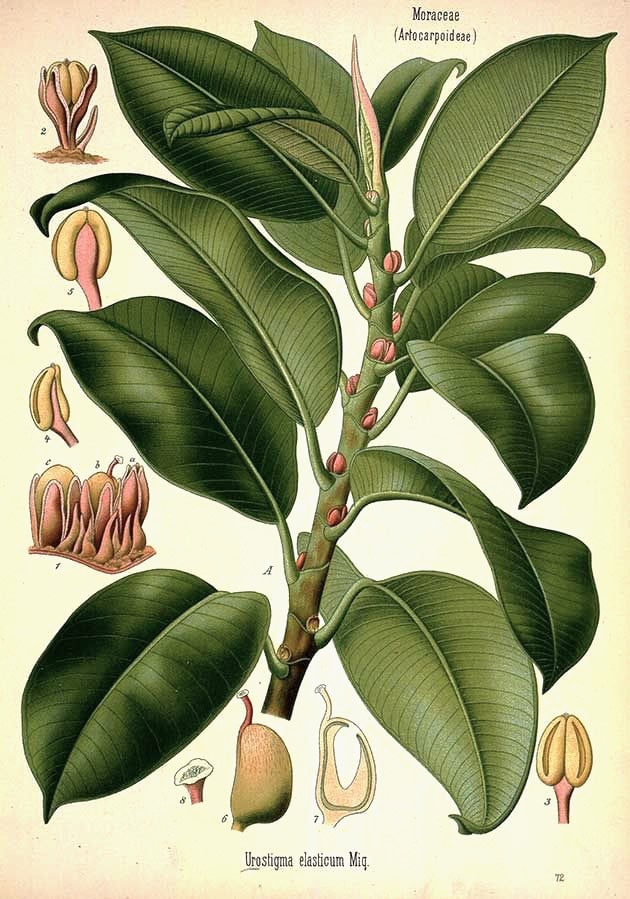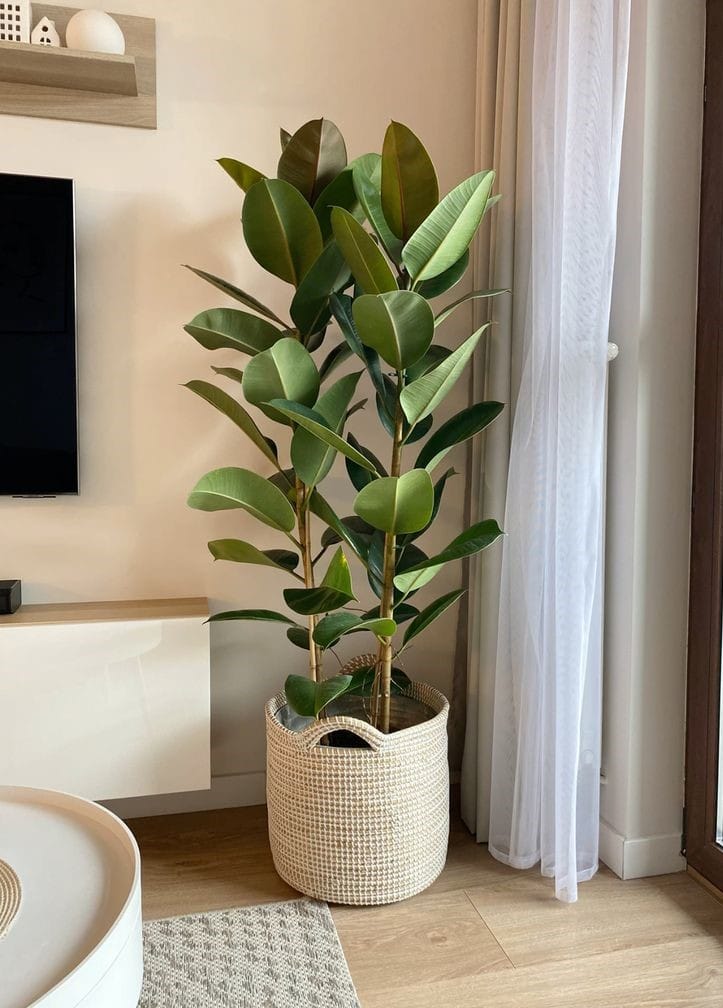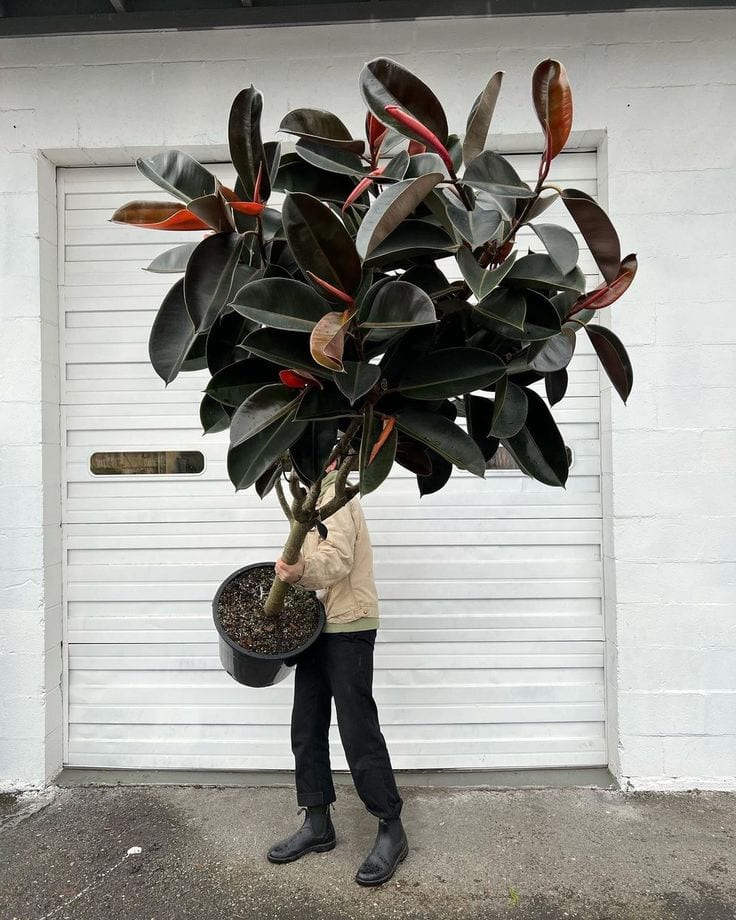A bouquet is not just a collection of flowers – it is an expression of emotion, style and attention to […]
Ficus Elastica (Rubber Tree)

Ficus Elastica (Rubber Tree) is one of the most popular houseplants, favored for its resilience, large glossy leaves, and air-purifying abilities. This plant not only adds an exotic touch to interiors but is also easy to care for, making it an ideal choice for beginner gardeners. In this article, we will explore its history, characteristics, cultivation methods, symbolism, and interesting facts about Ficus Elastica.
Origin and History
Ficus Elastica originates from the tropical regions of Southeast Asia, India, Nepal, Bangladesh, Myanmar, and Malaysia. In its natural habitat, this plant can reach heights of 30-40 meters, forming impressive aerial roots and a wide canopy. Indigenous people have long used the milky latex from the tree to produce rubber, which is why it is commonly known as the "Rubber Tree."
During the 19th century, Ficus Elastica became a popular decorative plant in Europe and North America due to its resilience and adaptability to different growing conditions. Today, it is one of the most widespread houseplants worldwide.



Description and Characteristics
Ficus Elastica is an evergreen plant with large, thick, and glossy leaves that can grow up to 30 cm in length. The leaves are dark green, while some varieties display variegated patterns with creamy or reddish hues. Its stem is sturdy, and over time, the plant develops aerial roots that help it anchor itself and absorb moisture from the air.
Popular Ficus Elastica varieties include:
Ficus elastica 'Robusta' – large, dense green leaves.
Ficus elastica 'Tineke' – variegated variety with cream-green leaves.
Ficus elastica 'Burgundy' – dark red or almost black leaves.
Ficus elastica 'Abidjan' – dark green leaves with a slight reddish tint underneath.
How to Grow Ficus Elastica?
Light: Ficus Elastica thrives in bright but indirect light. It can adapt to lower light conditions, but this will slow its growth. Direct sunlight may scorch its leaves.
Temperature and Humidity: This plant grows best in temperatures between 18-25°C (65-77°F). It does not tolerate sudden temperature fluctuations or cold drafts. In winter, temperatures should not drop below 15°C (59°F). Ficus Elastica prefers moderate humidity but can withstand drier air.
Watering: Water the plant moderately, allowing the topsoil to dry out before the next watering. Reduce watering frequency in winter. Avoid water stagnation in the pot, as it may lead to root rot.
Fertilization: During spring and summer, feed the plant once a month with fertilizer for green plants. No fertilization is needed in winter.
Repotting: Young plants should be repotted every 1-2 years, while mature plants can be repotted every 3-4 years. If the plant becomes too large, replacing the top layer of soil is sufficient.
Propagation: Ficus Elastica can be propagated through stem cuttings. The cuttings should be placed in water or moist soil until they develop roots.



Benefits of Ficus Elastica
Air purification – Ficus Elastica is one of NASA’s top-rated plants for removing toxins like formaldehyde and benzene from the air.
- Improves humidity – Releases moisture into the air, helping reduce dryness in indoor environments.
Reduces stress – Having green plants like Ficus Elastica at home or in the office creates a sense of calm and harmony.
Symbolism and Legends
Ficus Elastica is associated with stability, endurance, and resilience. In many cultures, this plant symbolizes wealth and success. In India, some species of ficus are considered sacred and are used in religious rituals.
Popularity and Demand
Ficus Elastica is one of the most sought-after houseplants due to its durability, easy maintenance, and air-purifying properties. It is popular in homes and office spaces alike.
Is It Safe for Pets?
Ficus Elastica is toxic to dogs and cats. The latex it exudes when injured can cause skin irritation and digestive issues if ingested. If you have pets, keep the plant out of their reach.
Why is it called rubber ficus?
The name "rubber ficus" comes from the latex sap that the plant secretes when injured. This sap contains rubber, which was used in the past to make rubber.
Conclusion
Ficus Elastica is a wonderful plant that combines beauty, functionality, and resilience. With proper care, it can be a long-term companion in your home, purifying the air and creating a cozy atmosphere.
